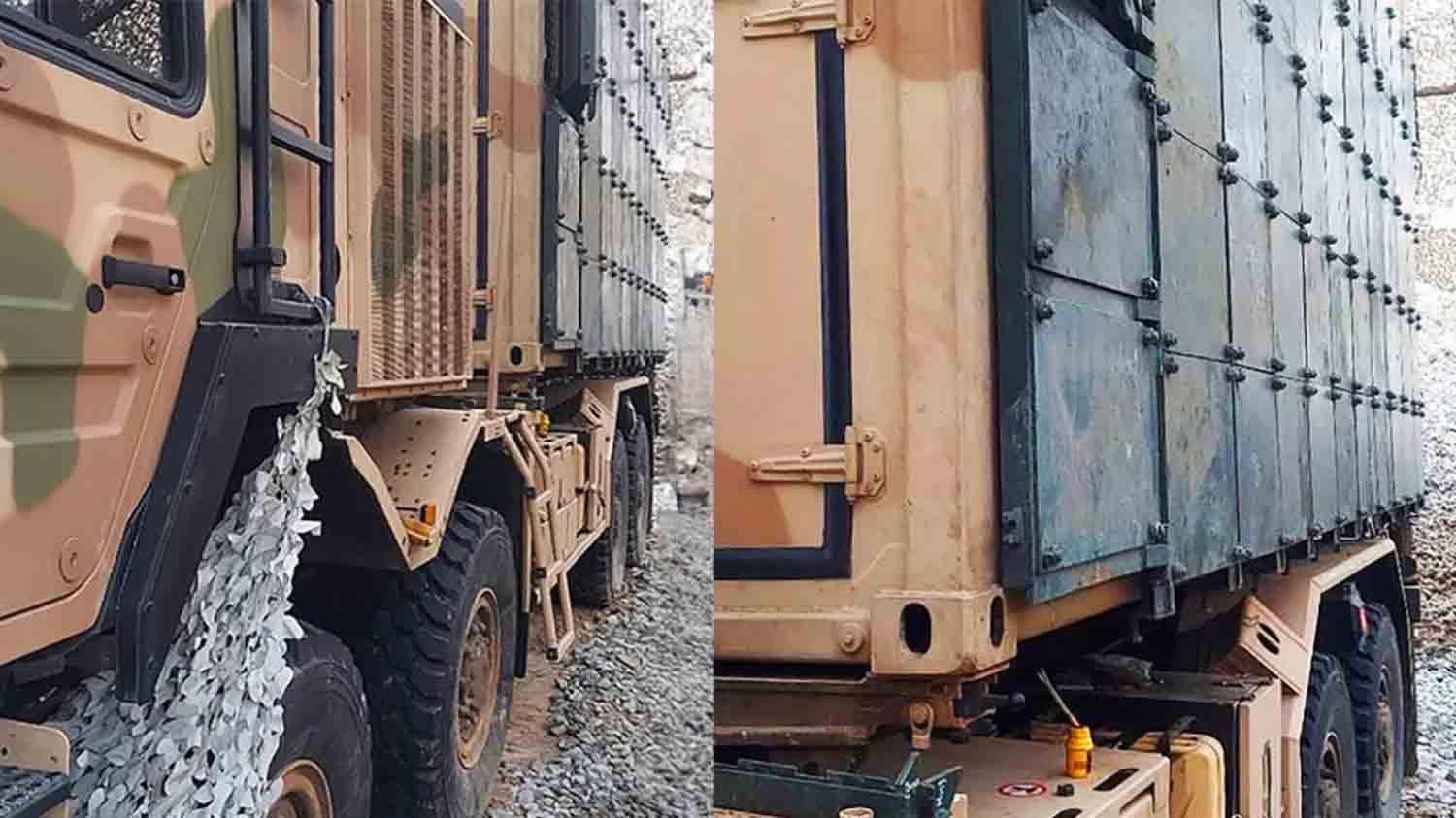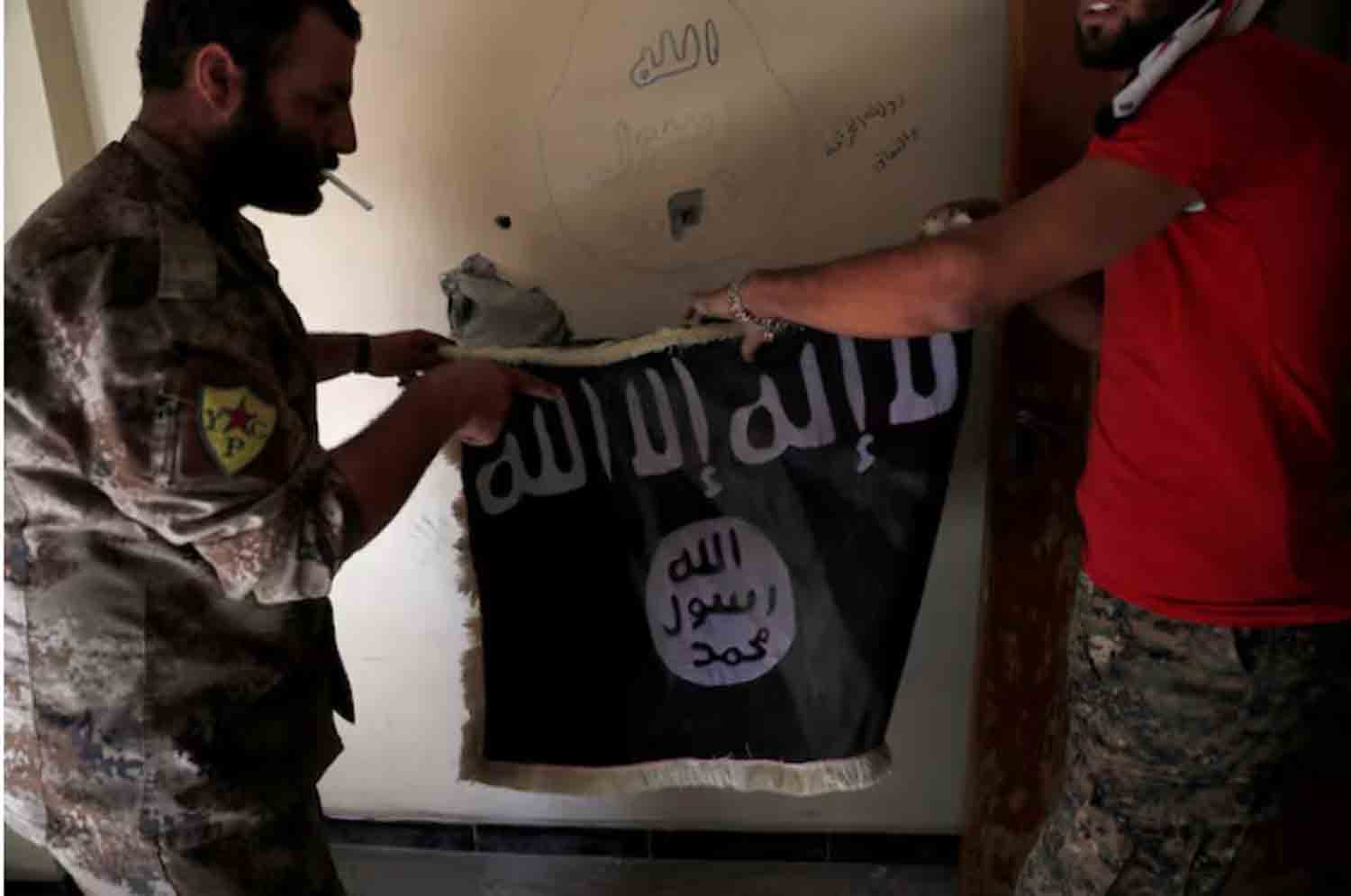A prominent Ukrainian metal and mining enterprise, known for producing cope cages for the nation’s tanks and combat vehicles, has announced the installation of a new armor protection system on at least one of Ukraine’s advanced air defense systems. The company plans to manufacture additional units based on insights gained from the ongoing conflict. Both Russia and Ukraine have been enhancing their mechanized equipment with caging and supplementary armor to improve protection, particularly against drone assaults.
Currently, Western air defense systems provided to Ukraine are among the top targets for Russian forces, facing attacks from various lower-end drones and sophisticated standoff munitions. These include time-sensitive drone reconnaissance paired with Iskander ballistic missile strikes. Additionally, artillery fire poses a significant threat to systems positioned near the front lines.
On Friday, the Metinvest Group revealed that it has developed a protective system comprising nearly 200 armored steel plates, each up to 8 mm thick, affixed to the sides of a Western-supplied air defense system’s command module. The total weight of this armor exceeds 2.6 tons, yet the company asserts that it does not compromise the system’s functionality or mobility. This initiative is part of Metinvest’s larger “Steel Front” wartime production program, which also produces pre-fabricated protective shelters, body armor, and various other supplies for the Ukrainian military.
The company announced that the system is engineered to safeguard against shrapnel, although it did not specify any particular weapon. Protection from nearby explosions is vital for the survival of air defense personnel and their equipment, as many air defense systems consist of various mobile or semi-mobile elements. If one component is targeted, armor can be crucial in preserving the command vehicle and its crew. This principle also applies to certain cluster munitions and artillery strikes.
“We initiated the project from the ground up in just six weeks, and based on the designs, we produced a shield for the crews operating the Patriot surface-to-air missile (SAM) system using Metinvest’s Ukrainian armor steel,” stated Oleksandr Myronenko, chief operating officer of Metinvest Group and head of the Group’s specialized steel production for the Ukrainian military. “This shield ensures protection against fragmentation for both the defenders and the air defense command system. Our skilled engineers also oversaw the armor’s assembly.”
Col. Yuri Ignat, spokesperson for the Ukrainian Air Force, informed us that the protection system has been installed on a German-made IRIS-T SLM air defense system currently in use in Ukraine. The command module for this system can be seen in the accompanying video and images. The reason for the inconsistency in information is not clear, but it is possible that the system is present on both platforms. We have contacted Metinvest for further clarification.
Ukraine has acquired two variants of IRIS-T systems from Germany. The IRIS-T SLS is designed for short-range defense, while the IRIS-T SLM serves medium-range needs. Both missile variants were initially developed for air-to-air combat. The manufacturer of the IRIS-T is Diehl Defense, and Ukraine has received a total of six SLM systems and five SLS systems.
According to the Oryx open-source tracking group, Ukraine has experienced losses of several components from Western-supplied air defense systems, including Patriot, IRIS-T, and National Advanced Surface-to-Air Missile Systems (NASAMS). The report indicates that at least two M901 launchers for the MIM-104 Patriot systems have been destroyed, along with damage to an AN/MPQ-53 radar. Additionally, one MAN SX45 8×8 launcher for the IRIS-T SLM system has been destroyed, and a TRML-4D multi-function radar has sustained damage. The group also reports the destruction of two NASAMS launchers. However, the actual losses are likely much higher, as Oryx only records losses with visual confirmation.
Metinvest has utilized its experience with armored vehicles to create a new protective system for air defense systems.
“The Group has successfully produced steel screens for the domestic T-64 and T-72 tanks, American M1 Abrams tanks, and Bradley infantry fighting vehicles, and is preparing to integrate these screens into various Leopard 2 models,” the company stated. “To date, over 300 screens have been supplied to the military.”
The images released by Metinvest showcased a comprehensive array of screens, featuring a primary screen positioned atop the turret, along with additional screens surrounding the front, sides, and rear of the vehicle. The complete setup appeared to include extra angled sections designed to eliminate gaps between the top and side panels. Notably, the images revealed minimal openings left for the Abrams’ side-mounted launchers, which are utilized to deploy smoke grenades for concealment. It is important to recognize that FPV drone operators have demonstrated a remarkable ability to exploit even the smallest gaps in armor screens and other defensive measures to conduct attacks.
Another image shared by the company depicted an additional screen affixed to the rear of the hull.
As emphasized in Metinvest’s press release, the primary objective of the newly designed factory-made cope cage for the Abrams is to enhance protection against first-person view kamikaze drones. These highly agile drones, equipped with warheads that detonate upon impact, have become a persistent threat on both sides of the conflict in Ukraine. FPV drones, in particular, are increasingly regarded as being as significant on the battlefield as traditional artillery. Furthermore, Russia has been steadily working to counter Ukraine’s initial advantages in this domain.
An air defense expert expressed skepticism regarding Metinvest’s assertion that the additional weight of the armor on the SAM command module would not impact its mobility.
“Adding 4,600 pounds to any vehicle beyond the standard load plan is considerable,” stated David Shank, a retired Army colonel and former commandant of the Army Air Defense Artillery School at Fort Sill, Oklahoma, during our conversation on Friday. “I would argue that this added weight would impede the performance of the prime mover responsible for towing these large trailer systems.”
This is a significant factor, Shank noted, as Ukraine often relocates its air defense assets to respond to new threats.
Any additional safeguards for air defense personnel will be appreciated, particularly for systems deployed in forward positions that are vulnerable to various Russian threats.
Discover more from Defence Talks | Defense News Hub, Military Updates, Security Insights
Subscribe to get the latest posts sent to your email.





